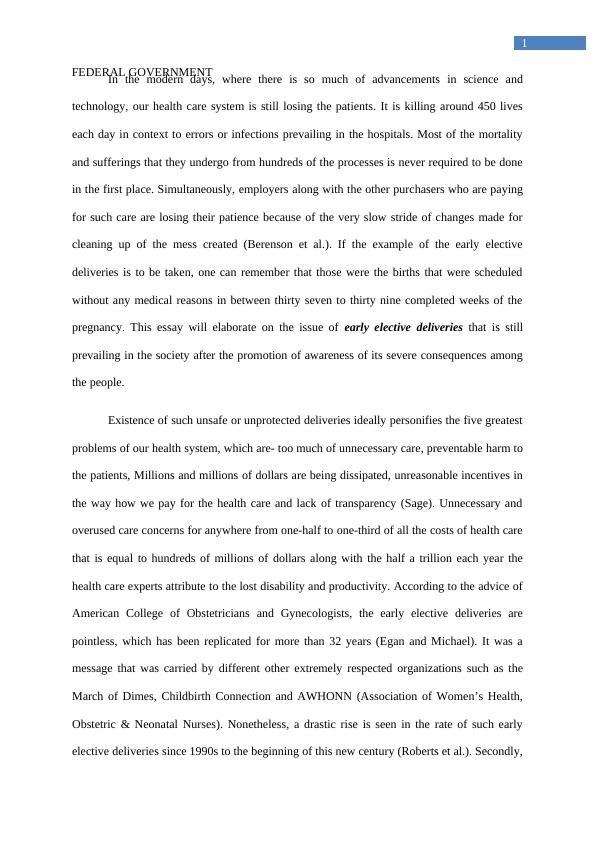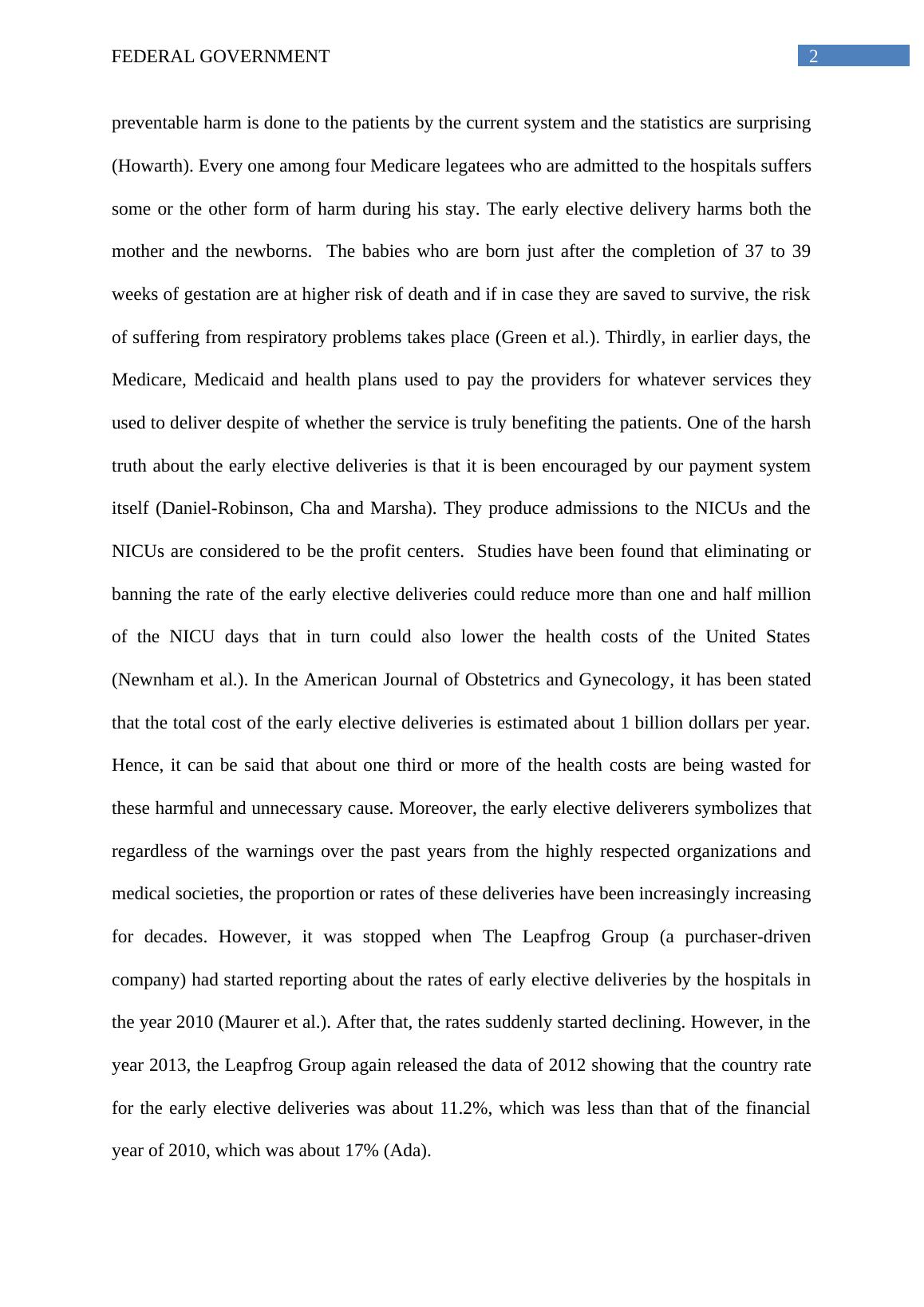Federal Government - Essay
Added on 2021-04-17
6 Pages1591 Words62 Views
Running head: FEDERAL GOVERNMENTFederal GovernmentName of the Student:Name of the University:Author note:

1FEDERAL GOVERNMENTIn the modern days, where there is so much of advancements in science andtechnology, our health care system is still losing the patients. It is killing around 450 liveseach day in context to errors or infections prevailing in the hospitals. Most of the mortalityand sufferings that they undergo from hundreds of the processes is never required to be donein the first place. Simultaneously, employers along with the other purchasers who are payingfor such care are losing their patience because of the very slow stride of changes made forcleaning up of the mess created (Berenson et al.). If the example of the early electivedeliveries is to be taken, one can remember that those were the births that were scheduledwithout any medical reasons in between thirty seven to thirty nine completed weeks of thepregnancy. This essay will elaborate on the issue of early elective deliveries that is stillprevailing in the society after the promotion of awareness of its severe consequences amongthe people. Existence of such unsafe or unprotected deliveries ideally personifies the five greatestproblems of our health system, which are- too much of unnecessary care, preventable harm tothe patients, Millions and millions of dollars are being dissipated, unreasonable incentives inthe way how we pay for the health care and lack of transparency (Sage). Unnecessary andoverused care concerns for anywhere from one-half to one-third of all the costs of health carethat is equal to hundreds of millions of dollars along with the half a trillion each year thehealth care experts attribute to the lost disability and productivity. According to the advice ofAmerican College of Obstetricians and Gynecologists, the early elective deliveries arepointless, which has been replicated for more than 32 years (Egan and Michael). It was amessage that was carried by different other extremely respected organizations such as theMarch of Dimes, Childbirth Connection and AWHONN (Association of Women’s Health,Obstetric & Neonatal Nurses). Nonetheless, a drastic rise is seen in the rate of such earlyelective deliveries since 1990s to the beginning of this new century (Roberts et al.). Secondly,

2FEDERAL GOVERNMENTpreventable harm is done to the patients by the current system and the statistics are surprising(Howarth). Every one among four Medicare legatees who are admitted to the hospitals sufferssome or the other form of harm during his stay. The early elective delivery harms both themother and the newborns. The babies who are born just after the completion of 37 to 39weeks of gestation are at higher risk of death and if in case they are saved to survive, the riskof suffering from respiratory problems takes place (Green et al.). Thirdly, in earlier days, theMedicare, Medicaid and health plans used to pay the providers for whatever services theyused to deliver despite of whether the service is truly benefiting the patients. One of the harshtruth about the early elective deliveries is that it is been encouraged by our payment systemitself (Daniel-Robinson, Cha and Marsha). They produce admissions to the NICUs and theNICUs are considered to be the profit centers. Studies have been found that eliminating orbanning the rate of the early elective deliveries could reduce more than one and half millionof the NICU days that in turn could also lower the health costs of the United States(Newnham et al.). In the American Journal of Obstetrics and Gynecology, it has been statedthat the total cost of the early elective deliveries is estimated about 1 billion dollars per year.Hence, it can be said that about one third or more of the health costs are being wasted forthese harmful and unnecessary cause. Moreover, the early elective deliverers symbolizes thatregardless of the warnings over the past years from the highly respected organizations andmedical societies, the proportion or rates of these deliveries have been increasingly increasingfor decades. However, it was stopped when The Leapfrog Group (a purchaser-drivencompany) had started reporting about the rates of early elective deliveries by the hospitals inthe year 2010 (Maurer et al.). After that, the rates suddenly started declining. However, in theyear 2013, the Leapfrog Group again released the data of 2012 showing that the country ratefor the early elective deliveries was about 11.2%, which was less than that of the financialyear of 2010, which was about 17% (Ada).

End of preview
Want to access all the pages? Upload your documents or become a member.
Related Documents
Assignment on Healthcare - Outline of Health Care Lawlg...
|7
|1598
|21
